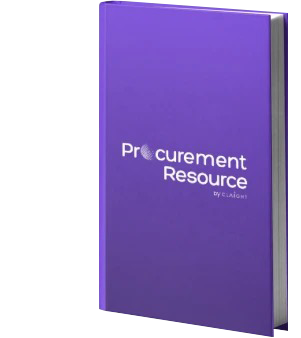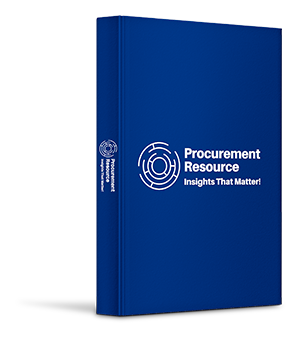Reports

Global Caps and Closures Market: Country Overview; Recent Events; Value Chain Analysis; Production Process; Price Analysis; Indicator Analysis; Market Dynamics: Drivers & Constraints, Innovations & Trends, SWOT Analysis, Porter’s Five Forces; Industry Best Practices: Sourcing Strategy, Procurement Model, Key Factors Influencing the Quotation; Key Supplier Analysis, 2024-2032
Caps and Closures Industry Report by Regional Category Spend, Price Analysis, Key Demand, and Price Indicators, and Best Buying Practices
The global Caps and Closures market produced a volume of about 1911 billion units in 2021. The industry is projected to grow at a CAGR of around 3.8% in the forecast period of 2022-2027 to reach a volume of about 2390 billion units by 2027.
The global Caps and Closures industry report gives a comprehensive analysis of the industry, including key segments, trends, drivers, restraints, the competitive landscape, and other essential market aspects. The growing demand for packaging from various end-user industries is primarily driving the market growth. The Asia Pacific is the highest category spender by region, driving the need for the Caps and Closures industry.
Industry Definition and Segmentation
Closures are tools that operate as a barrier, protecting the packaging contents from ambient air, light, and dust particles, extending the product's shelf life. They are used in various other sectors, including pharmaceuticals, personal care, home care, and automobiles, and offer simple-to-open packaging. The Caps and Closures industry report comprises segments by type (metal and plastic), application (Beer, Bottled Water, CSD, Other Beverages, Food, Pharmaceuticals, and Others) and region (North America, Europe, Asia Pacific, the Middle East and Africa, and South America).
The Asia Pacific Region is Driving the Growth of the industry
The Asia Pacific holds a significant share in the industry due to the presence of highly populated nations such as China and India and the rising food and beverage industry. Furthermore, rising demand for cosmetics and toiletries in countries such as Japan and South Korea is likely to drive up the use of caps and closures. The level of life in this region is rising, driving more per-capita packaging spending. Demand for packaged items for on-the-go consumption like bottled water is driven by busy lifestyles, thus resulting in market growth.
The market is primarily driven by the extensive application of the product for packaging in various industries. The rising demand for different food products and alcoholic and non-alcoholic drinks leads to an increased demand for packaging closures, thus resulting in an increased demand for the product. In addition, the growing awareness of the health advantages of eating well is expected to stimulate demand for dietary supplements, which will, in turn, drive demand for packaging materials. Also, the rising consumer demand for bottled water due to changes in lifestyles and per capita consumption is boosting the need for the product. As a result, the industry is propelling.
Best Procurement Practices
The global Caps and Closures industry report by Procurement Resource gives an in-depth analysis of the best buying practices followed by major international Caps and Closures regions across the globe, such as engagement models, contract terms, and buyer and supplier negotiation levers, among others.
Category Management Studies
Plastic closures are made using an injection moulding method. The thermoplastic polymer pellets are heated in a metal hopper until they become soft and flexible. Most of the custom colouration for these plastic closures is done at this time. The softened plastic is then pumped into a complicated mould under high pressure. The softened polymer is moulded into the required cap's shape using the mould. After the polymer has cooled, the caps are removed from the mould.
Growing Concerns Over Sustainability, Further Propelling the Procurement of Caps and Closures
The industry is being aided by the growing shift toward sustainable packaging due to concerns over the environment. As a result, a recycling trend is growing in cap and closure manufacture, with many businesses using recycled content as a raw material to reduce reliance on virgin plastic. As opposed to plastic, metal is more sustainable and robust and is gaining traction furthering the industry's development. Also, PP and PE are the principal basic materials used to make caps and closures and are widely used in industry as they provide a cost-effective sealing option.
However, fluctuations in the prices of raw materials are likely to hamper the industry's growth.
The regional markets for the industry can be divided into North America, South America, Europe, the Middle East and Africa, and the Asia Pacific.
Key Industry Players Mentioned in the Caps and Closures Industry Report
- Amcor Plc.
- Berry Global, Inc.
- AptarGroup, Inc.
- Crown Holdings, Inc.
- Bericap GmbH & Co.
Market Landscape
The market is competitive due to international and regional businesses and several publicly traded corporations throughout the world. Companies are growing by providing clients with unique solutions, such as customised cap printing and coating services. Manufacturers in the business can get a competitive advantage by offering highly specialised items such as BPA-free caps and closures, appealing colours, and printing-friendly surfaces. These businesses make use of augmentation, new and innovative product promotion, mergers and acquisitions, and mutual aid as indispensable progress strategies to enhance their product portfolio and geographical existence to fulfil the rising demand for caps and closures from emerging nations.
Key Initiatives by Companies
- After introducing a dispensing closure comprised of post-consumer recycled resin in February 2019 in Europe, the firm manufactures dispensing closures using 50% recycled PC, facilitating a global shift to a circular economy and a sustainable future.
- Closure Systems International, for example, released a beverage closure with 30% PCR content in October 2020 in collaboration with Coca-Cola to boost product sustainability.
1. Executive Summary
2. Caps and Closures Market Snapshot
2.1. Caps and Closures Market Outlook
2.2. Caps and Closures Industry Analysis by Type
2.2.1. Metal
2.2.2. Plastic
2.3. Caps and Closures Industry Analysis by Application
2.3.1. Beer
2.3.2. Bottled Water
2.3.3. CSD
2.3.4. Other Beverages
2.3.5. Food
2.3.6. Pharmaceuticals
2.3.7. Others
2.4. Region Overview
2.4.1. North America
2.4.2. Asia Pacific
2.4.3. Europe
2.4.4. Latin America
2.4.5. Middle East and Africa
3. Impact of Recent Events
4. Caps and Closures Value Chain Analysis
5. Caps and Closures Production Process
6. Trade Analysis
7. Major Risk Factors in Sourcing
8. Caps and Closures Cost Structure
9. Caps and Closures Price Analysis
10. Key Demand Indicator Analysis
11. Key Price Indicator Analysis
12. Caps and Closures Market Dynamics
12.1. Drivers & Constraints
12.2. Industry Events
12.3. Innovations & Trends
12.4. Swot Analysis
12.5. Porter’s Five Forces
12.5.1. Buyer Power
12.5.2. Supplier Power
12.5.3. Threat of New Entrants
12.5.4. Threat of Substitutes
12.5.5. Industry Rivalry
13. Industry Best Practices
13.1. Sourcing Strategy
13.2. Procurement Model
13.3. Contract Structure
13.4. Negotiation Levers
13.5. Pricing Model
13.6. Key Factors Influencing the Quotation
14. Key Supplier Analysis
14.1. Amcor PLc
14.2. Berry Global, Inc
14.3. AptarGroup,Inc
14.4. Crown Holdings, Inc.
14.5. Bericap GmbH & Co.
The global Caps and Closures market size was valued at USD yy billion in 2021.
In the forecast period of 2022-2027, the market is projected to grow at a CAGR of xx%.
The significant demand for sustainable packaging is one of the essential drivers of the Caps and Closures market growth.
Amcor Plc., Berry Global, Inc., AptarGroup, Inc., Crown Holdings, Inc., and Bericap GmbH & Co. are some of the major companies in the market.
The Asia Pacific region of the Caps and Closures industry holds a significant share in the market.
The global Caps and Closures market produced a volume of about 1911 billion units in 2021, primarily driven by the extensive application of the product for packaging in various industries. Aided by the growing shift towards sustainable packaging due to concerns over the environment, the market is expected to witness further growth in the forecast period of 2022-2027, growing at a CAGR of 3.8%. The market is projected to produce a volume of about 2390 billion units by 2027. Some of the leading players in the industry are Amcor Plc., Berry Global, Inc., AptarGroup, Inc., Crown Holdings, Inc., and Bericap GmbH & Co.
Procurement Resources' detailed research approach explores deep into the industry, encompassing the macro and micro aspects of the industry. Its team of experts uses a combination of cutting-edge analytical tools and their expertise, thus, delivering its customers with market insights that are accurate and actionable and help them remain ahead of their competition.
Compare & Choose the Right Report Version for You
RIGHT PEOPLE
At Procurement Resource our analysts are selected after they are assessed thoroughly on having required qualities so that they can work effectively and productively and are able to execute projects based on the expectations shared by our clients. Our team is hence, technically exceptional, strategic, pragmatic, well experienced and competent.
RIGHT METHODOLOGY
We understand the cruciality of high-quality assessments that are important for our clients to take timely decisions and plan strategically. We have been continuously upgrading our tools and resources over the past years to become useful partners for our clientele. Our research methods are supported by most recent technology, our trusted and verified databases that are modified as per the needs help us serve our clients effectively every time and puts them ahead of their competitors.
RIGHT PRICE
Our team provides a detailed, high quality and deeply researched evaluations in competitive prices, that are unmatchable, and demonstrates our understanding of our client’s resource composition. These reports support our clientele make important procurement and supply chains choices that further helps them to place themselves ahead of their counterparts. We also offer attractive discounts or rebates on our forth coming reports.
RIGHT SUPPORT
Our vision is to enable our clients with superior quality market assessment and actionable evaluations to assist them with taking timely and right decisions. We are always ready to deliver our clients with maximum results by delivering them with customised suggestions to meet their exact needs within the specified timeline and help them understand the market dynamics in a better way.
Email Delivery Price: $ 899.00
The global nutmeg market reached a value of about 134 thousand tonnes in 2021. The industry is further expected to grow at a CAGR of about 4.5% in the forecast period of 2022-2027 to reach a value of around 167 thousand tonnes by 2027.
Read MoreEmail Delivery Price: $ 899.00
The global Artificial Intelligence Market reached a value of about USD 192 Billion in 2021. The industry is projected to grow at a CAGR of around 23% in the forecast period of 2022-2027 to reach a value of about USD 664.86 Billion by 2027.
Read MoreEmail Delivery Price: $ 899.00
The global HEOR market reached a value of about USD 1364.3 million in 2021. The industry is further expected to grow at a CAGR of about 12.81% in the forecast period of 2022-2027 to reach a value of around USD 2779.2 million by 2027.
Read More
